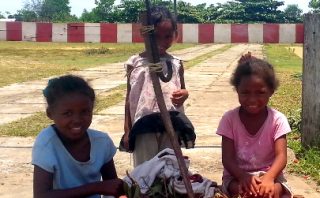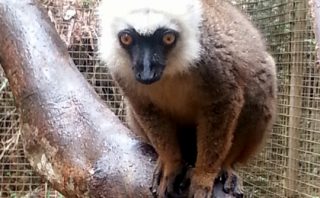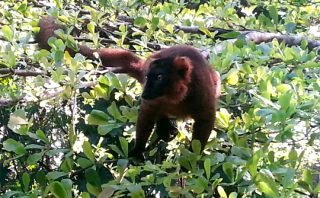A soulful call rises from the forest. “What’s that?”
“Sounds like whales in the trees?”
“That’s loud.”
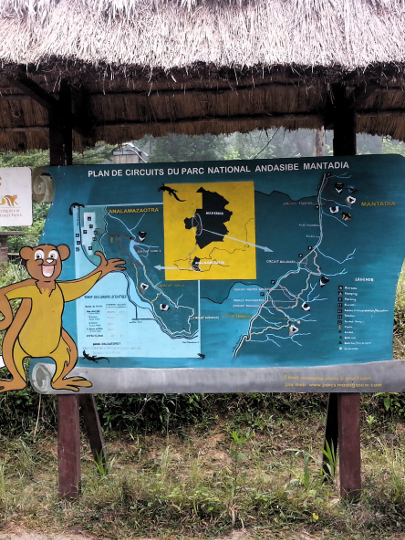
We are in the Andasibe section of Andasibe-Mantadia National Park. Our guide, Lalena, tells us it’s the song of babakoto, the indri lemur.
The indri sing together to tell other indri family groups where they are, and to warn non-family to stay away. They also sing to warn of danger. Sometimes the other indri groups sing back. An indri song can last up to three minutes. The singing can be heard up to three or four kilometers away. Loud.
Lalena agreed to be our guide at the park entrance when we arrived in the morning. I’m not sure if we picked him, he picked us, or if there’s some rotation for the guides and it was his turn. His English is good and he’s quite knowledgeable about the park plants and wildlife.
Andasibe-Mantadia National Park is four hours from Toamasina (Tamatave) and four hours from Antananarivo (Tana) by car. The park is just a few kilometers off RN 2. Some people hire a car and driver or a taxi to bring them here, some take a taxi-brousse, and some take La Micheline rail car from Tana, which is a five hour trip.
Andasibe-Mantadia National Park is 154 square kilometers. There are 13 species of lemurs in the park. The Andasibe section of the park is secondary forest and was set aside from Analamazaotra Forest Station in 1970 as a Special Reserve to protect indri habitat. The Mantadia section is primary forest and was protected in 1989 when the two areas were designated Andasibe-Mantadia National Park. Mantadia is 15 kilometers north of Andasibe. The track to Mantadia often requires a four wheel drive vehicle. Our car isn’t four wheel drive so we’re not going to Mantadia. The lemurs in the Andasibe section are draw enough for us.
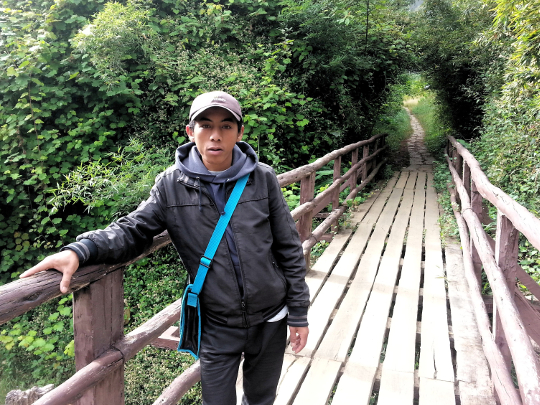
Common Brown Lemur
The common brown lemur is our first lemur sighting of the morning. The common brown lives here in the forests of eastern Madagascar, and in the forests in the northwest. These lemurs are relatively abundant.
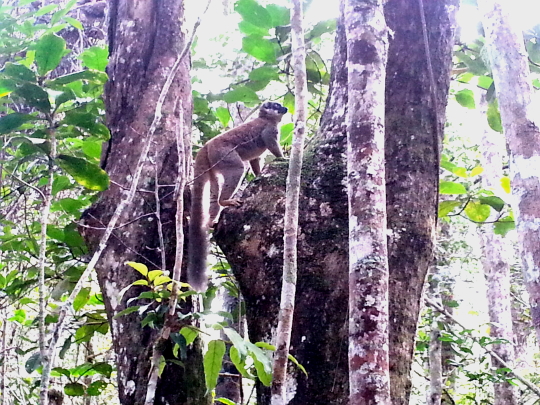
Indri Lemur
We next encounter the indri lemur. We hear their song before we see them. The Park Visitor Center has a detailed display about the indri. They are the largest living lemur today. When people first arrived in Madagascar, there were lemurs as big as gorillas. These are gone. And the indri are disappearing. They live only in the lowland and montane forests of eastern Madagascar. Due to habitat destruction, they are now a critically endangered species. And you won’t see one in a zoo. They die in captivity.

Diademed Sifaka Lemur
We come across a group of diademed sifaka lemurs. Lalena tells us these lemurs were brought here by the Ambatovy Project. The mining company impacted their original habitat so they moved them here in way of mitigation. The diademed sifaka feed at a different level in the trees than the indri so there isn’t too much competition between the two. Like the indri, the diademed sifaka live only in the forests of eastern Madagascar and are a critically endangered species.

Gray Bamboo Lemur
Lalena asks us to wait by a bridge as he looks for the gray bamboo lemur. He comes back disappointed. There aren’t any around. As we walk along the trail by a creek, we happen across a dozen of them. Lemur watching fortune smiles on us today. The gray bamboo lemur is also known as the eastern lesser bamboo lemur. Like the other lemurs we’ve seen today, the gray bamboo lives only in the lowland and montane forests of eastern Madagascar. However, they are relatively abundant and appear to do well in both primary and secondary (cut over) forests.



